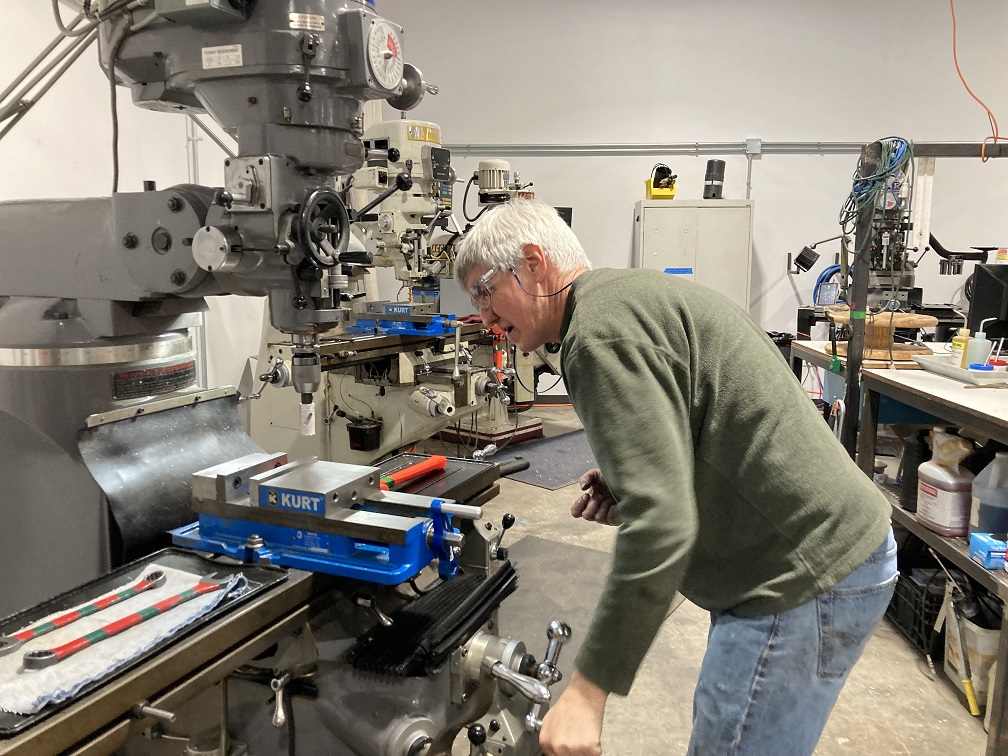Category:Milling Machines: Difference between revisions
No edit summary |
No edit summary |
||
| Line 75: | Line 75: | ||
|+ Vertical 3-Axis Milling Machines at Artisans Asylum | |+ Vertical 3-Axis Milling Machines at Artisans Asylum | ||
|- | |- | ||
! Accu II Mill !! Enco Mill !! [[:Sharp Manual Milling Machine |Sharp Mill "Click"]] !! [[:Sharp Manual Milling Machine |Sharp Mill "Clack"]] !! Bridgeport Mill | ! [[:Accupath Mill | Accu II Mill]] !! Enco Mill !! [[:Sharp Manual Milling Machine |Sharp Mill "Click"]] !! [[:Sharp Manual Milling Machine |Sharp Mill "Clack"]] !! Bridgeport Mill | ||
|- | |- | ||
| CNC || Manual || Manual || Manual || Manual (Out of Service) | | CNC || Manual || Manual || Manual || Manual (Out of Service) | ||
Revision as of 20:59, 2 March 2024
| Vertical Milling Machines | |
|---|---|
| General Info | |
| Make | various |
| Model | |
| Serial | |
| Specs | |
| Manual | |
| Asylum Info | |
| Location | Machine Shop |
| Rubric | |
| Training | |
| Testing | |
| Restrictions | red |
Description
On a milling machine, parts are created by removing material from a solid block (or workpiece) using a variety of spinning cutting tools.
A 3-axis vertical milling machine has a variable-speed vertical spindle and a heavy table that translates underneath it. A metal workpiece is clamped to the table and a cutting tool is held in the spindle. Cutting is done by moving the workpiece against the spinning tool, or by lowering the spinning tool into the workpiece.
A CNC milling machine operates by computer control. Motors are attached to the movement mechanics allowing the computer to make precision-machined parts automatically.
| Use For | Do Not Use For |
|---|---|
|
|
Safety Notes
| Eye protection required! | ||
|---|---|---|
Personal
- Wear safety goggles. Eyeglasses are NOT safety goggles.
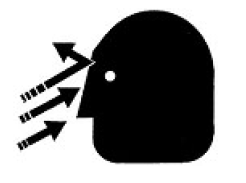
| |
|---|---|
- Beware of flying chips. They are HOT and SHARP.
- Do not wear loose clothing or jewelry when operating the machine. Long hair must be tied back or covered.
- Do not wear gloves. Gloves can be drawn into a cut by the spinning tool.
- Do not remove chips from the cutting area with bare hands. Use a chip brush or a shop-vac.
- Always keep a secure, stable stance. Avoid over-reaching. Clean up oil spills immediately and avoid slipping. Keep the work area clear of trip hazards.
Machine
- Work must be clamped securely in a vise and the vise clamped tightly to the table, or, work must be clamped securely to the table.
- Always stay at the machine while it is running.
- Do not operate the machine if any unusual or excessive heat, noise, smoke, or vibration occurs.
- Make sure the spindle has come to a complete stop before changing tools or unloading the workpiece. Keep hands clear of the spindle start switch when changing tools.
- NEVER USE COMPRESSED AIR to remove chips from the work area.
- Remove all wrenches, chuck keys, and loose parts before turning on the machine.
- Before running machine the spindle should be rotated by hand to make sure it is clear for cutting.
- Make sure the cutter is rotating in the proper direction before cutting material.
- Always use sharp cutters that are in good condition.
| Accu II Mill | Enco Mill | Sharp Mill "Click" | Sharp Mill "Clack" | Bridgeport Mill |
|---|---|---|---|---|
| CNC | Manual | Manual | Manual | Manual (Out of Service) |
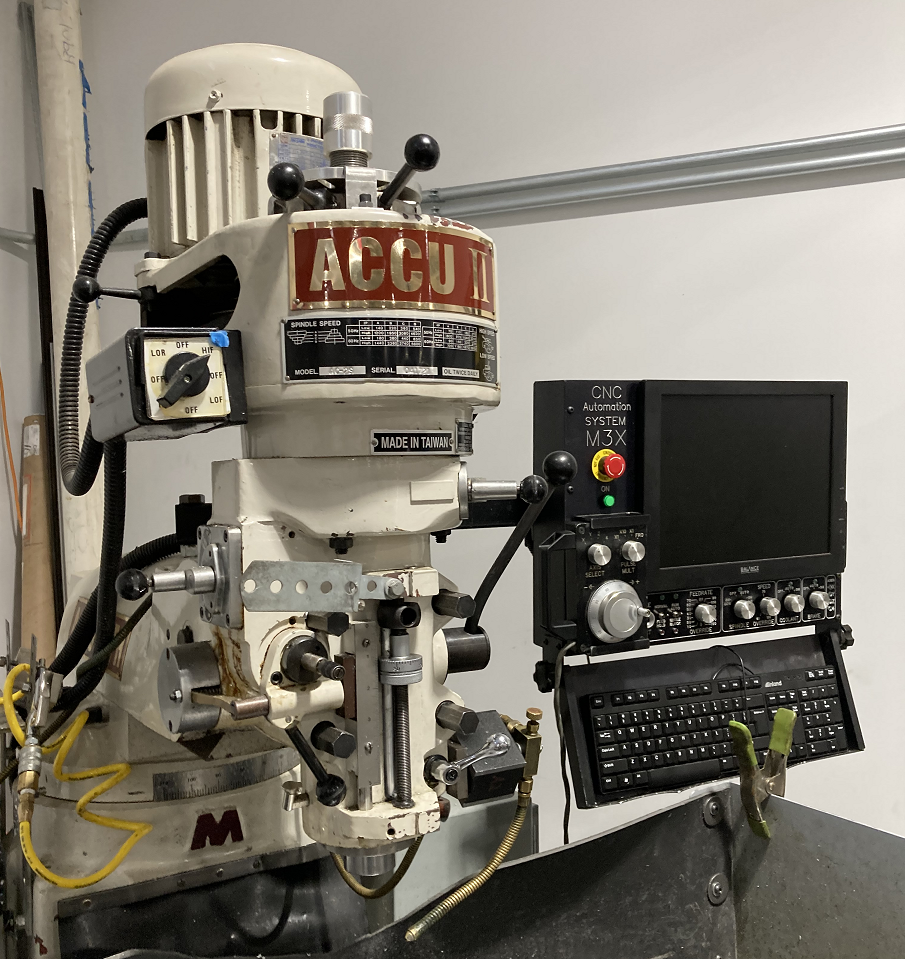 |
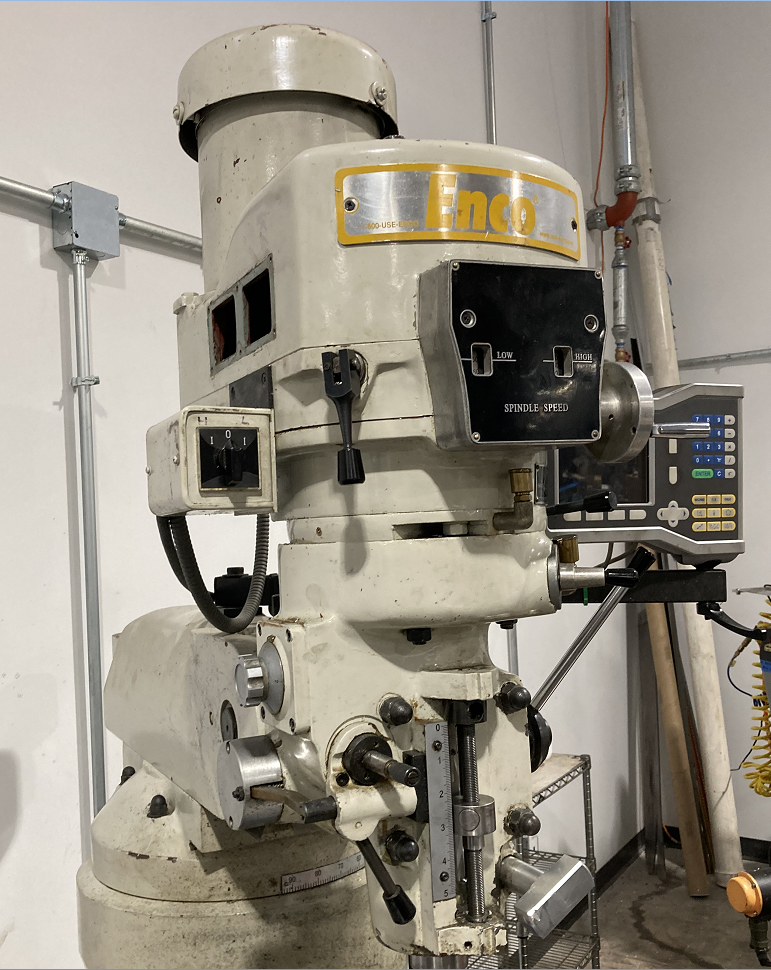 |
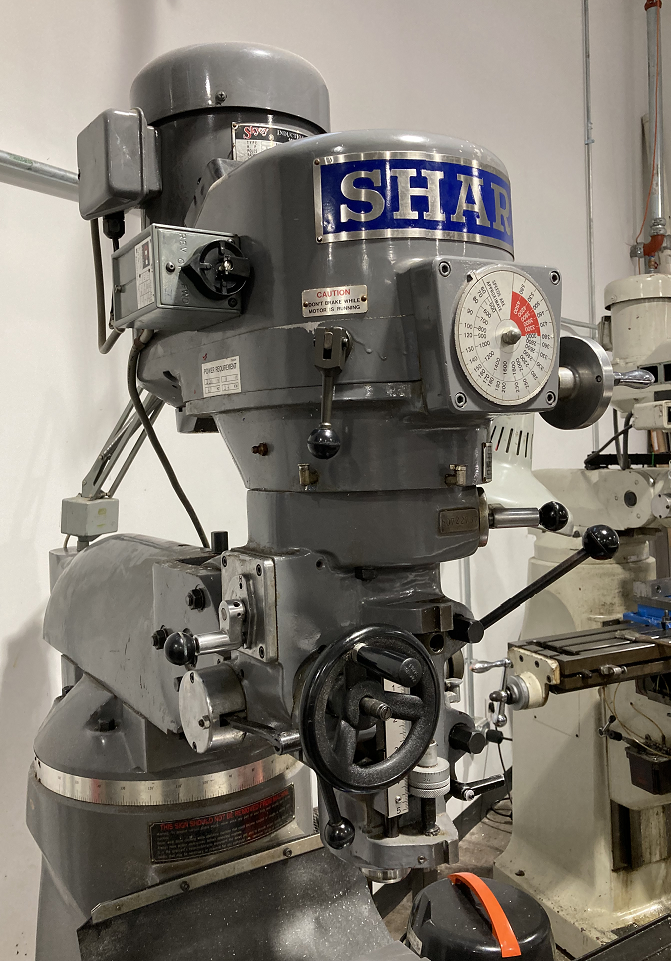 |
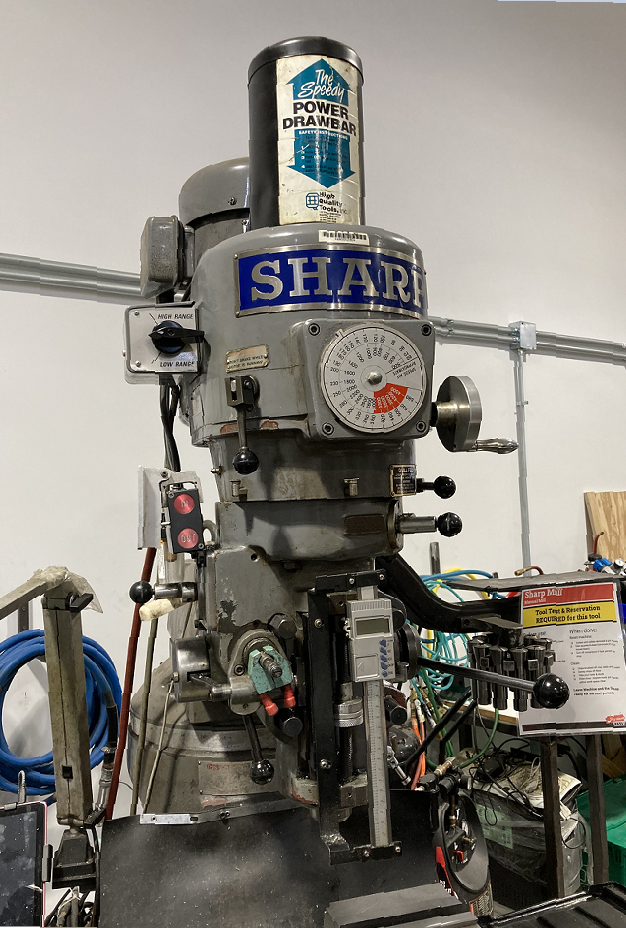 |
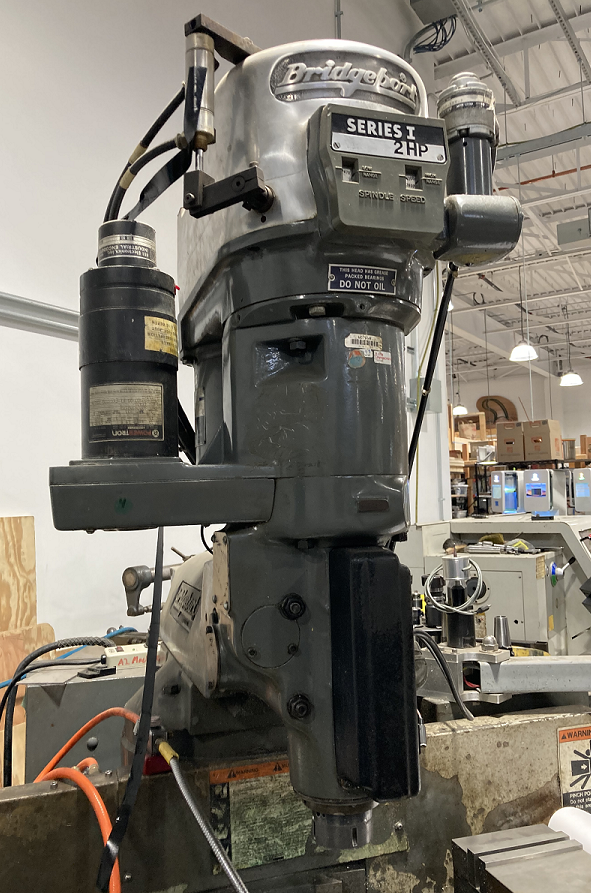
|
Parts of a Milling Machine

| |
|---|---|
| Parts of a Milling Machine |
Headstock:
The spindle is driven by the motor at the top. Frequently there is a crank-operated speed control located on the front.
An emergency stop (E-STOP) button is always located next the the motor power switch.
The spindle is raised and lowered through the Quill, actuated by a handle on the side of the headstock.
Tools are held in place with a drawbar that extends through the center of the spindle. The draw-bar can be tightened manually or with a pneumatic motor.
Table:
The moving table is carried on the machine's saddle.
Side-to-side (Longitudinal) motion of the table is controlled by ball crank handles on either end of the table. The scales are incremented by 0.001 inches.
Knee:
In-and-out (Cross) motion of the table is controlled by a crank on the front of the knee, also incremented by 0.001 inches.
The table is raised and lowered vertically by a crank on the side of the knee.
Base and Turret
These provide stability and allow some adjustment of the headstock.
Pages in category "Milling Machines"
The following 6 pages are in this category, out of 6 total.
